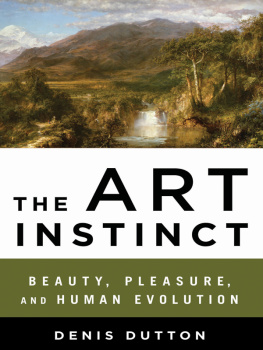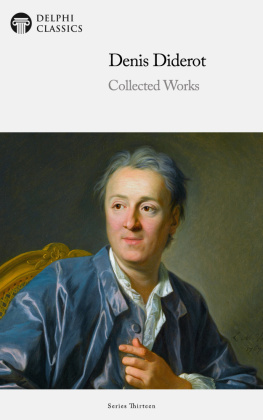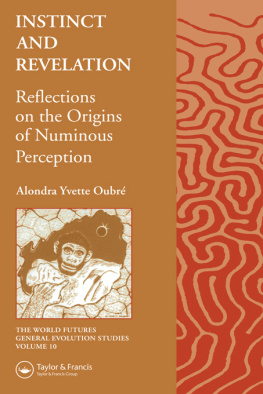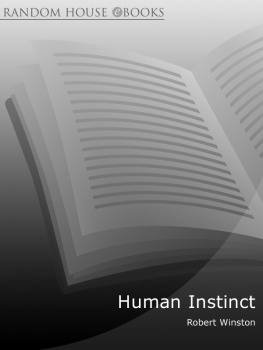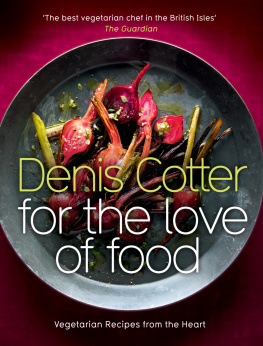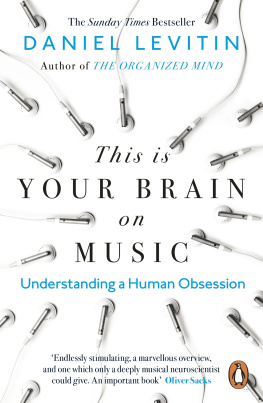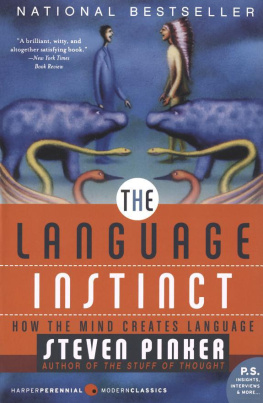Denis Dutton - The Art Instinct: Beauty, Pleasure, and Human Evolution
Here you can read online Denis Dutton - The Art Instinct: Beauty, Pleasure, and Human Evolution full text of the book (entire story) in english for free. Download pdf and epub, get meaning, cover and reviews about this ebook. year: 2009, publisher: Bloomsbury Press, genre: Art. Description of the work, (preface) as well as reviews are available. Best literature library LitArk.com created for fans of good reading and offers a wide selection of genres:
Romance novel
Science fiction
Adventure
Detective
Science
History
Home and family
Prose
Art
Politics
Computer
Non-fiction
Religion
Business
Children
Humor
Choose a favorite category and find really read worthwhile books. Enjoy immersion in the world of imagination, feel the emotions of the characters or learn something new for yourself, make an fascinating discovery.
- Book:The Art Instinct: Beauty, Pleasure, and Human Evolution
- Author:
- Publisher:Bloomsbury Press
- Genre:
- Year:2009
- Rating:4 / 5
- Favourites:Add to favourites
- Your mark:
- 80
- 1
- 2
- 3
- 4
- 5
The Art Instinct: Beauty, Pleasure, and Human Evolution: summary, description and annotation
We offer to read an annotation, description, summary or preface (depends on what the author of the book "The Art Instinct: Beauty, Pleasure, and Human Evolution" wrote himself). If you haven't found the necessary information about the book — write in the comments, we will try to find it.
Denis Dutton: author's other books
Who wrote The Art Instinct: Beauty, Pleasure, and Human Evolution? Find out the surname, the name of the author of the book and a list of all author's works by series.
The Art Instinct: Beauty, Pleasure, and Human Evolution — read online for free the complete book (whole text) full work
Below is the text of the book, divided by pages. System saving the place of the last page read, allows you to conveniently read the book "The Art Instinct: Beauty, Pleasure, and Human Evolution" online for free, without having to search again every time where you left off. Put a bookmark, and you can go to the page where you finished reading at any time.
Font size:
Interval:
Bookmark:
The Art Instinct
THE ART
INSTINCT
Beauty, Pleasure,
&Human Evolution
DENIS DUTTON

Copyright 2009 by Denis Dutton
All rights reserved. No part of this book may be used or reproduced in any manner whatsoever without written permission from the publisher except in the case brief quotations embodied in critical articles or reviews. For information address Bloomsbury Press, 175 Fifth Avenue, New York, NY 10010.
Published by Bloomsbury Press, New York
All papers used by Bloomsbury Press are natural, recyclable products made from wood grown in well-managed forests. The manufacturing processes conform to the environmental regulations of the country of origin.
LIBRARY OF CONGRESS CATALOGING-IN-PUBLICATION DATA
Dutton, Denis.
The art instinct : beauty, plea sure, and human evolution / Denis Dutton.1st U.S. ed.
p. cm.
Includes bibliographical references and index.
eISBN: 978-1-60819-193-2
Aesthetics. 2. ArtPhilosophy. 3. Evolution (Biology) 4. Instinct. I. Title.
BH39. D84 2009
701'.17dc22
2008028304
First U.S. Edition 2009
1 3 5 7 9 10 8 6 4 2
Designed by Rachel Reiss
Typeset by Westchester Book Group
Printed in the United States of America by Quebecor World Fairfield
For Margit, Sonia, and Ben
Contents
These pages offer a way of looking at the arts that flies in the face writing and criticism todaya way that I believe has more validity, more power, and more possibilities than the hermetic discourse that deadens so much of the humanities. It is time to look at the arts in the of Charles Darwins theory of evolutionto talk about instinct art.
What can Darwin possibly tell us about artistic creation? To be sure, Darwinian evolution may explain our physical featuresthe function the pancreas or the origin of our opposable thumbbut our Emily Dickinsons poetry, Bachs Chaconne, or Jackson Pollocks One: Number 31, 1950? The idea that humans have a mating instinct perhaps. A maternal instinct, maybe. But an art instinct? The very seems oxymoronic.
Instincts, we tend to think, are automatic, unconscious patterns behavior. The spiders web that glistens in the morning dew was dictated a gene tic code in the spiders tiny brain. The web may be a lovely sight our eyes, but its beauty is a mere by-product of a spiders way of enjoying breakfast. From the standpoint of either the spider or the human observer, such pretty accidents of nature are a long way from how normally regard works of art.
Art works are the most complex and diverse of human achievements, creations of free human will and conscious execution. Art-making rational choice, intuitive talent, and the highest levels of learned, innate, skills. Every member of a web-spinning spider species essentially the same web from the same code as every other member. Art works, on the other hand, tend toward a personal expression for perperformances of the same tragedy or intermezzo. The arts are about parpaticularity. They bring together traditions, genres, an artists private experience, fantasy, and emotion, fused and transformed in aesthetic imagination.
On top of this, artistic works and perperformances are often among the most gaudy and flamboyant of human creationsseemingly the opposite of pragmatic behaviorwhile at the rarefied level of the most profound and enduring masterpieces, they can reveal an elevated spirituality unparalleled in human experience. Any way you look at it, the arts have nothing to do with the mundane facts of body and brain that Darwinian evolution typically explains.
Everything Ive just said about the arts is accurateexcept the last sentence. In this book I intend to show why thinking that the arts beyond the reach of evolution is a mistake overdue for correction.
Darwin himself wrote at the conclusion of On the Origin of Species, the distant future, I see open fields for far more important Psychology will be based on a new foundation, that of necessary acquirement of each mental power and capacity by gradation. How right he was: recent years have seen immensely productive applications of Darwinian ideas in anthropology, economics, social psychology, linguistics, history, politics, legal theory, and criminology, as well as philosophical study of rationality, theology, and value theory. Underlying this Darwinian sea change in research and scholarship is evolutionary psychology, the science that explains many hitherto curious aspects of social, sexual, and cultural life. While it is true that the arts, the cultural worlds out of which they arise, are immensely complex, are not isolated from evolution. Why should the study of the arts itself off from a perspective that has already enriched and revitalized so many other fields of inquiry?
The arts in all their glory are no more remote from evolved features the human mind and personality than an oak is remote from the subterranean waters that nourish and sustain it. The evolution Homosapiens in the past million years is not just a history of how came to have acute color vision, a taste for sweets, and an upright gait. also a story of how we became a species obsessed with creating artistic caves to the continuous worldwide glow of television screens.
This book is about that obsession: its ancient evolutionary sources and how they ultimately affect artistic tastes and interests today. My line attack is rather different from other approaches. I do not begin with psychologyfor example, with studies of how colors sounds are perceivedand interpret the present character of the from those findings. Such an approach explains too much: not only perception of paintings but the practical use of eyesight and every other sense. Nor do I start off with prehistory, beginning with the invention jewelry perhaps eighty thousand years ago, moving on to remarkable ivory carvings of mammoths and the haunting cave paintings of Lascaux, in order to come out at the other end talking about Michelangelo Picasso. Arguments in this manner try to extrapolate too much from a small, fragmentary, and still poorly understood body of surviving Paleolithic art. The state of the arts today can no more be inferred from looking inside prehistoric caves than todays weather can be predicted from the last Ice Age.
I begin instead in chapter 1 with something familiar and down-to-earth: calendars and the kinds of landscape illustrations that decorate them across the world. Like landscape painting and the design of public parks and even golf courses, calendars have an intriguing relationship African savannas and other landscape forms hospitable for human evolution. As I will show, human landscape tastes are not just products social conditioning, stemming from manipulative choices made calendar manufacturers (or by landscape artists); rather, people who make and sell calendars are catering to prehistoric tastes shared by their customers across the globe.
My method is therefore to start with what we know by direct, firsthand experience: the state of the arts worldwide today. From this vantage point we can then look back toward what is known about human evolution, bolstered by ethnographies describing preliterate hunter-gatherer tribes that survived into the twentieth century, since their ways life reflect those of our ancient ancestors. Piecing this evidence Greeks: human nature, with its innate interests, predispositions, and in intellectual and social life, including tastes in entertainment artistic experience.
An innate human nature applied cross-culturally in turn points to naturalistic, cross-cultural definition of the concept of art, as discussed in chapter 3. The arts must be understood in terms of a cluster featuresskill display, plea sure, imagination, emotion, and so forth that normally allow us to identify art objects and artistic perperformances through history and across cultures. These features are persis tent in human life and arise spontaneously wherever artistic forms are adapted invented, whether for instruction or amusement. Too many disputes theory tiresomely rehash the artistic status of amusing modernist provocations, such as Andy Warhols signed soup cans or John Cages sitting at a piano with a stopwatch. We need first to focus on what makes
Next pageFont size:
Interval:
Bookmark:
Similar books «The Art Instinct: Beauty, Pleasure, and Human Evolution»
Look at similar books to The Art Instinct: Beauty, Pleasure, and Human Evolution. We have selected literature similar in name and meaning in the hope of providing readers with more options to find new, interesting, not yet read works.
Discussion, reviews of the book The Art Instinct: Beauty, Pleasure, and Human Evolution and just readers' own opinions. Leave your comments, write what you think about the work, its meaning or the main characters. Specify what exactly you liked and what you didn't like, and why you think so.

